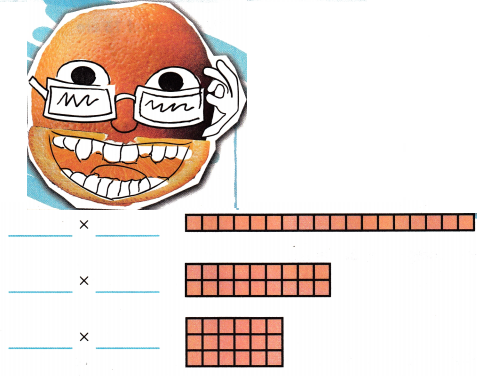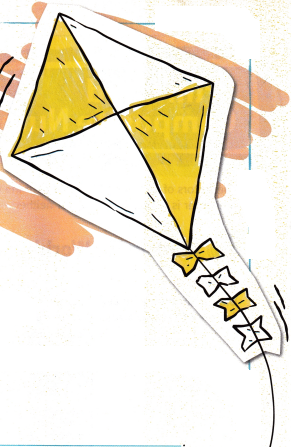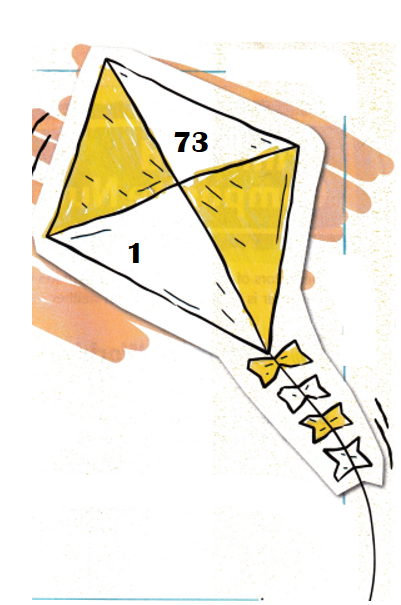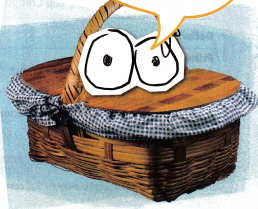All the solutions provided in McGraw Hill My Math Grade 4 Answer Key PDF Chapter 8 Lesson 1 Factors and Multiples will give you a clear idea of the concepts.
McGraw-Hill My Math Grade 4 Answer Key Chapter 8 Lesson 1 Factors and Multiples
The factors of a number help us determine whether a number is prime, composite, or neither.
Math in My World
Example 1
Blair is arranging 18 cupcakes on a shelf. Find the factors of 18. Use arrays to find the factors.

So, the factors of 18 are __________, __________, __________, __________, __________, and __________,
Since 18 has more than two factors, it is a composite number.
Answer:

Explanation:
Number of cupcakes Blair is arranging on a shelf = 18.
Factors of 18:
1 × 18 = 18.
2 × 9 = 18.
3 × 6 = 18.
6 × 3 = 18.
9 × 2 = 18.
So, the factors of 18 are 2, 3, 6, 9, 18, and 1.
Since 18 has more than two factors, it is a composite number.
Example 2
Sarah is at the park. She counts 73 kites. Write the factors of 73 on the kite. Tell whether it is prime, composite, or neither.

The factors of 73 are ____________ and _____________.
Since 73 has exactly two distinct factors, it is a ___________ number.
Answer:
The factors of 73 are 1 and 73.
Since 73 has exactly two distinct factors, it is a prime number.

Explanation:
Number of kites she counts = 73.
Factors of 73:
1 × 73 = 73.
A prime number is a whole number greater than 1 whose only factors are 1 and itself.
In Mathematics, composite numbers are numbers that have more than two factors.
Example 3
Tell whether 1 is prime, composite, or neither.
Find the factors of 1.
1 × 1
Since 1 only has one distinct factor, it is __________________.
Answer:
1 is a prime number.
Explanation:
1 × 1 = 1.
Factors of 1: 1 and itself.
Since 1 only has one distinct factor, it is prime number..
Talk Math
Identify the smallest prime number. Explain how you know this is the smallest prime number.

Answer:
1 is the smallest prime number.
Explanation:
A prime number is a number that has only two factors, that is 1 and the number itself. The smallest non-zero number is 1. 1 has only one factor which is 1 itself.
Guided Practice
Tell whether each number is prime, composite, or neither.
Question 1.
5
Answer:
5 is a prime number.
Explanation:
Number 5:
Factors of 5:
1 × 5 = 5.
A prime number is a number that has only two factors, that is 1 and the number itself.
Question 2.
15
Answer:
15 is a composite number.
Explanation:
Number 15:
Factors of 15:
1 × 15 = 15.
3 × 5 = 15.
In Mathematics, composite numbers are numbers that have more than two factors.
Question 3.
21
Answer:
21 is a composite number.
Explanation:
Number 21:
Factors of 21:
1 × 21 = 21.
3 × 7 = 21.
In Mathematics, composite numbers are numbers that have more than two factors.
Question 4.
31
Answer:
31 is a prime number.
Explanation:
Number 31:
Factors of 31:
1 × 31 = 31.
A prime number is a number that has only two factors, that is 1 and the number itself.
Question 5.
26
Answer:
26 is a composite number.
Explanation:
Number 26:
Factors of 26:
1 × 26 = 26.
2 × 13 = 26.
In Mathematics, composite numbers are numbers that have more than two factors.
Question 6.
61
Answer:
61 is a prime number.
Explanation:
Number 61:
Factors of 61:
1 × 61 = 61.
A prime number is a number that has only two factors, that is 1 and the number itself.